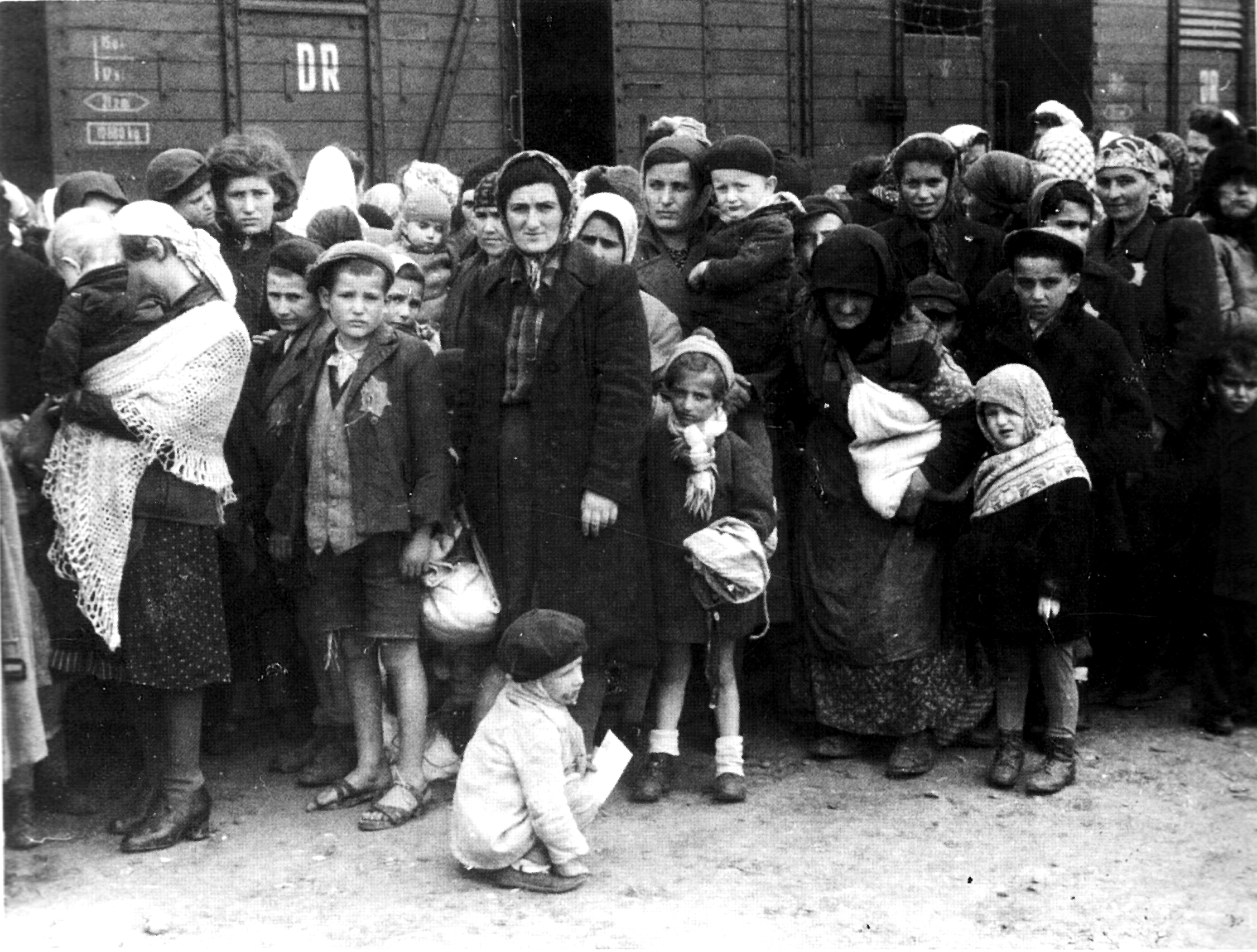Difference between revisions of "Shoah and Adoption"
(Created page with "{{#eimage: http://upload.wikimedia.org/wikipedia/commons/f/f2/Bundesarchiv_Bild_183-N0827-318%2C_KZ_Auschwitz%2C_Ankunft_ungarischer_Juden.jpg |410x579px|thumb|'''German Nazi ...") |
m (Admin moved page Shoah to Shoah and Adoption) |
(No difference)
| |
Revision as of 16:51, 14 May 2014
Biography
The Shoah, also known as the Holocaust, is the name given to the attempt by Nazi Germany to exterminate not only the Jews of Europe, their primary target, but also the mentally and physically handicapped, the Roma (whose term for the Shoah is the Porrajmos), homosexuals, and other groups they believed were dangerous or inferior to the white "Aryan" people, as they called themselves.
A byproduct of this attempt was the splitting up of families and the creation of many orphan children. Some children found safety outside the territory occupied by the Nazis by means of the Kinderstransport or were sent privately to family and friends, or happened by good fortune to be out of danger at boarding school, etc. Other orphans were created when parents managed to send their children to hide with sympathetic families or in convents and monasteries inside Nazi-occupied countries before they themselves were sent to concentration camps and murdered. Other orphans were inmates of the death camps whose parents were murdered but who themselves somehow survived until liberation. These orphan survivors were inevitably permanently scarred mentally by their experiences, but in spite of this some have gone on to live not only relatively normal, but even highly successful lives. Like the Australian Aboriginal and Torres Strait Islander Children, Child Migrants, child Slaves, the Native American and Alaskan Native Children, Janissaries, the Kinder der Landstraße and other groups of children and individuals effectively orphaned by war, the short-sightenedness, stupidity or evil of their fellows, the child orphans of the Shoah are monuments to human resilience, ingenuity and strength. From the many possible examples a few have been included in this directory: Balint, Lea Berglas, David Forman, Miloš Westheimer, Ruth Siegel Wiesel, Eliezer Wilkomirski, Binjamin (a fraudulent case) Zweig, Stefan Jerzy
References
Gilbert, Martin. The Boys: The Untold Story of 732 Young Concentration Camp Survivors. (New York: Henry Holt & Co., 1997) Lappin, Elena. "The Man with Two Heads," Granta, 66 (Summer 1999), pp. 7-65 Encyclopaedia Judaica, ed. by Cecil Roth. (Jerusalem: Keter Publishing House, 1971) Pyrish, Elzbieta. "Jewish Convent Children Thanking their Christian Saviors," Warsaw Voice, 21 September 1997. Also available at: [1] Arnold, Michael S. "In Search of an Identity," The Jerusalem Post, Internet Edition, 7 May 1997. Available at: [2] University of South Florida. College of Education. Florida Center for Instructional Technology. "A Teacher's Guide to the Holocaust: An Overview of the People and Events of the Holocaust through Text, Documents, Photographs, Art and Literature." Available at: [3] Hancock, Ian. "Roma: Genocide of, in the Holocaust." Available at: [4] See Also Berglas, David Forman, Miloš Westheimer, Ruth Siegel (Dr. Ruth) Wiesel, Eliezer (Elie) Zweig, Stefan Jerzy
- Adoption Celebrities
- Adopted Persons
- Asian
- European
- Jewish
- Austria
- Belarus
- Belgium
- Bulgaria
- Czech Republic
- Estonia
- France
- Germany
- Greece
- Hungary
- Italy
- Latvia
- Lithuania
- Netherlands
- Norway
- Poland
- Romania
- Russia
- Slovak Republic
- Ukraine
- Yugoslavia
- 20th Century
- Birth Identity Disputed or Deliberately Concealed
- Ethnic or Religious Identity Confused or Concealed, Racism
- Exile or Persecution (religious, Political or Social)
- Birth or Infancy
- Pre-school Years
- School-age Years, Adolescence
- Orphaned (Both Parents)
- Parent(s) in Prison or Labor Camp, Executed
- War or Persecution
- Priest, Religious, Teacher, Coach, Mentor, Patron, Apprentice Master or Owner
- Others ("Strangers")
- Institutional Care
- Parent(s) Died, Disappeared or Became Incapacitated
- Tracing Impossible or Birth Family Extinct
